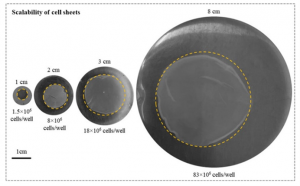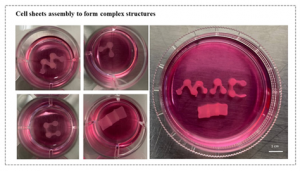Scalable fabrication of self-assembled cell sheet
Tech ID
23-086
Inventors
P. Ravi Selvagnapathy
Maedeh khodamoradi
Patent Status
US provisional filed
Stage of Research
Development stage
Contact
Tao Li
Business Development Officer
Abstract
Cell sheet tissue engineering is a scaffold-free technique that allows the fabrication of in vivo-like tissues, especially cell-dense and transparent tissues such as the heart and cornea. However, existing methods for fabricating cell sheets show some limitations such as a long culture period, extensive substrate treatment, fragility, and relatively small size of obtained cell sheets. Researchers at McMaster University have developed a simple and scalable fabrication method for self-assembled cell sheets, which utilizes a low surface energy and ultralow adhesion substrate to culture cells and form a self-assembled and scaffold-free cell sheet within a short incubation time. They have also developed methods to assemble them into patterns and large area constructs.
Applications
- Cell rich tissue regeneration (heart and skeletal muscle tissue engineering)
- Cultivating meat production by using cell sheets made with skeletal muscle cells and adipocytes
- Making skin for grafts by stacking cell sheets made with fibroblasts, keratinocytes, and stem cells
- Ocular tissue engineering and in vitro disease modeling (cornea and retina tissues)
Advantages
- Rapid formation of a cell sheet (4-6hrs incubation)
- Ultra-low adhesion between cell sheet and substrate
- Customizable pattern and coculture for cell sheet
- Customizable shape and thickness of cell sheet
- Easy construction of complex structure with cell sheets
- Inexpensive procedure



